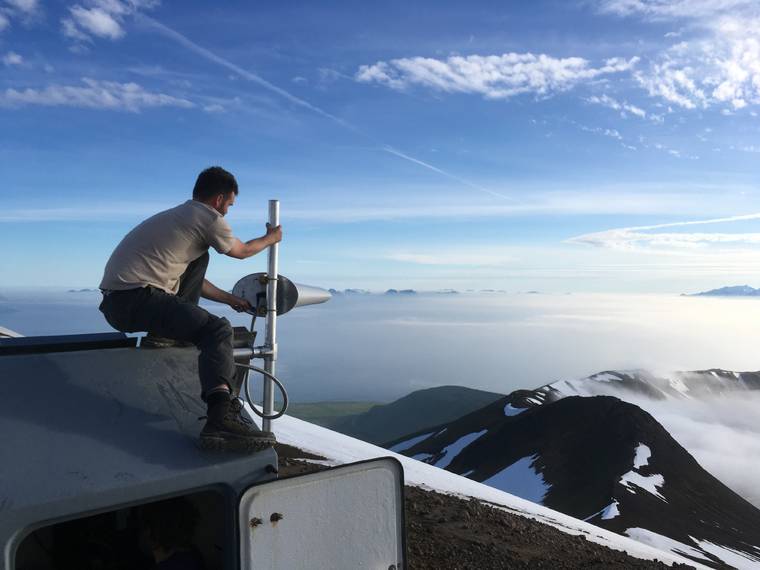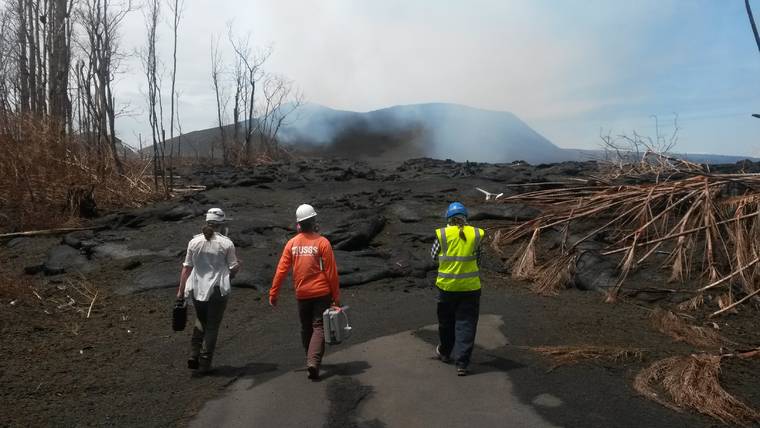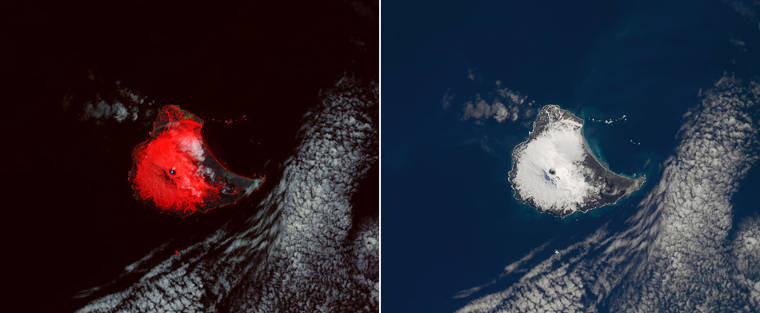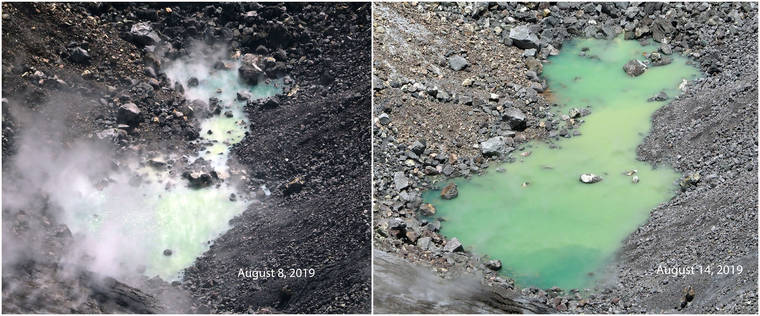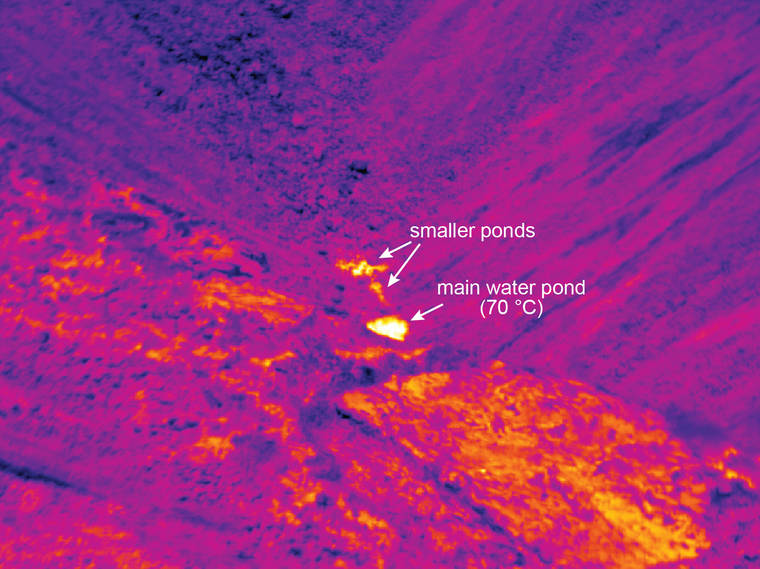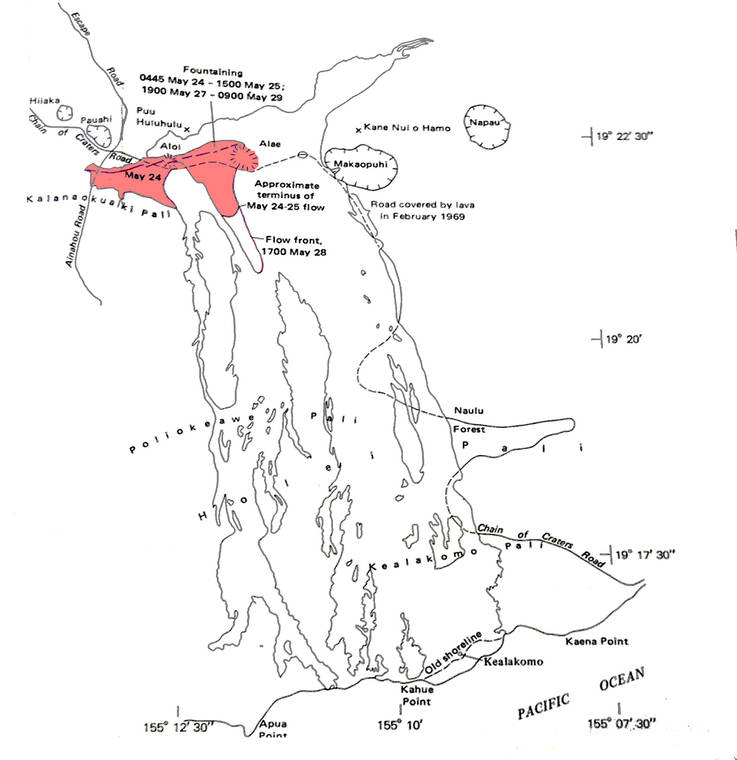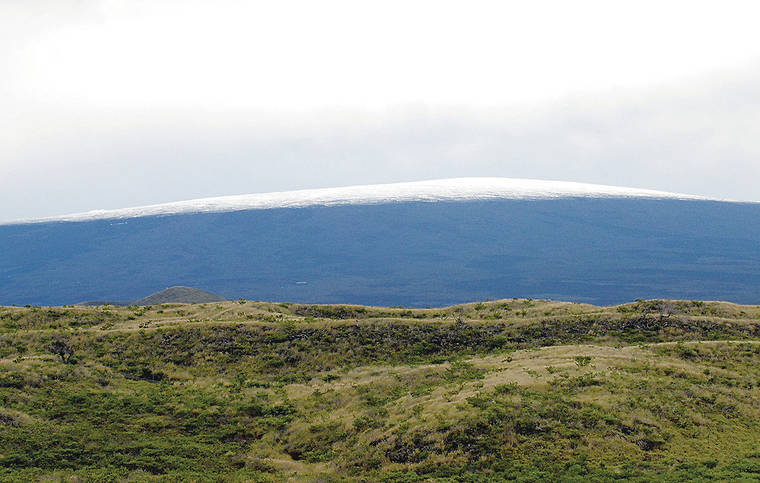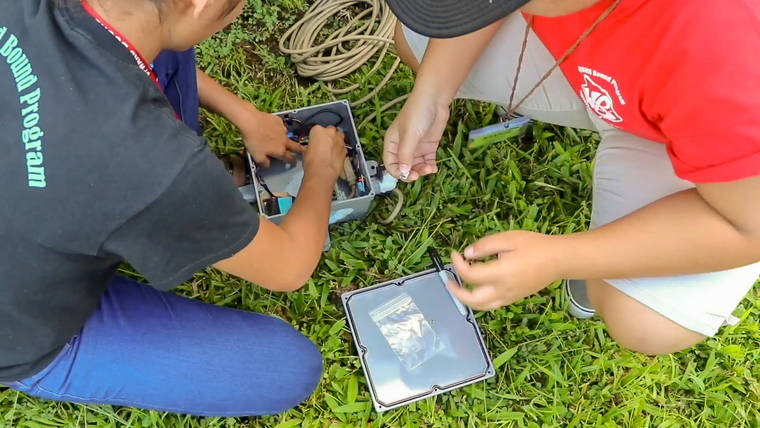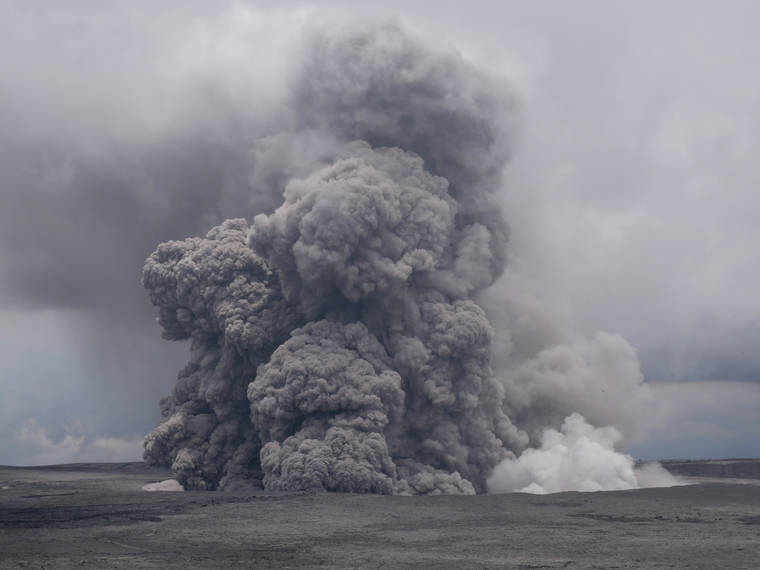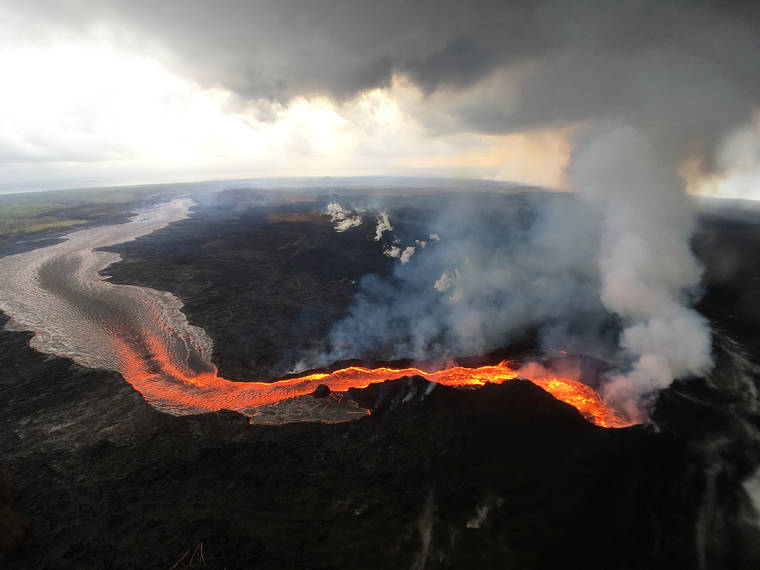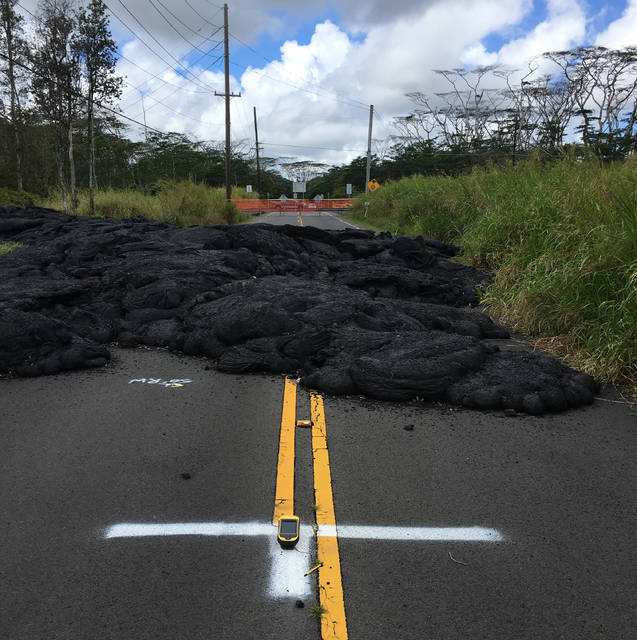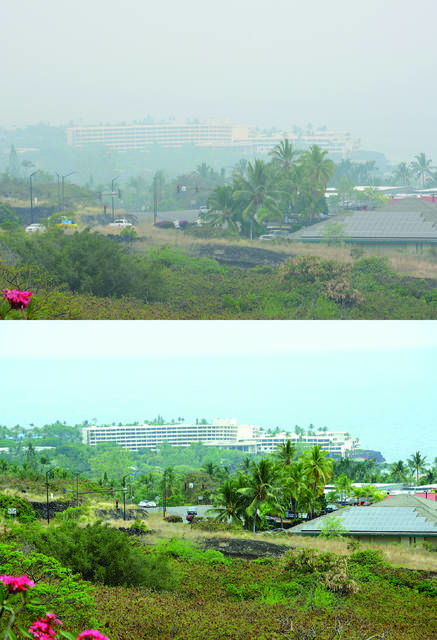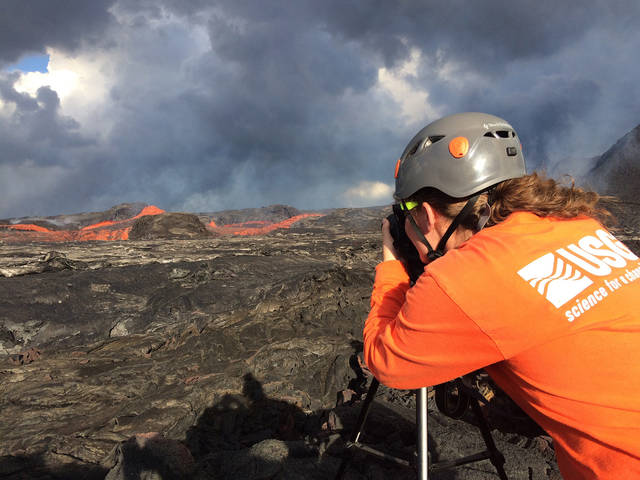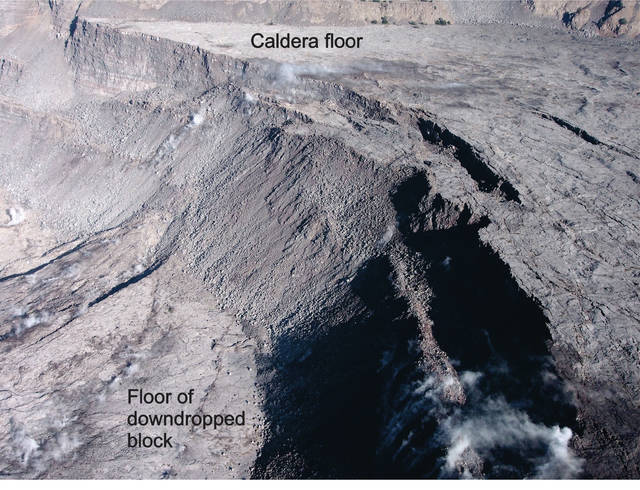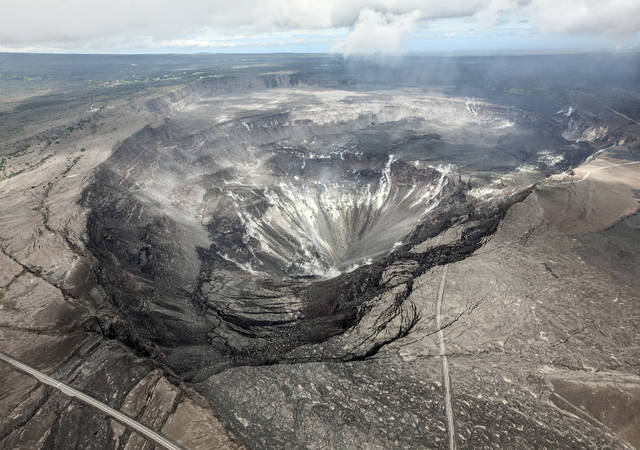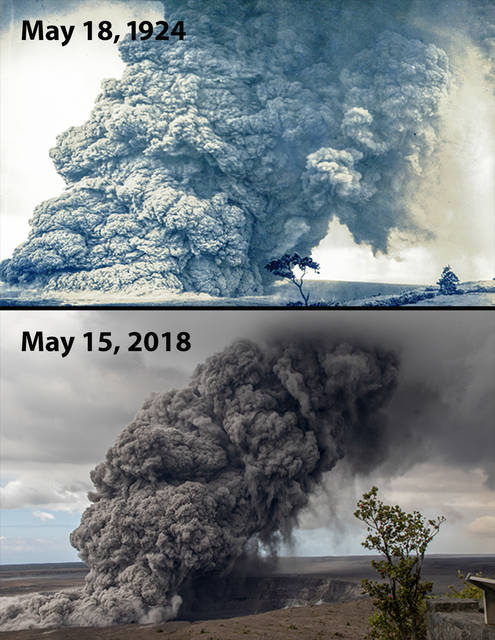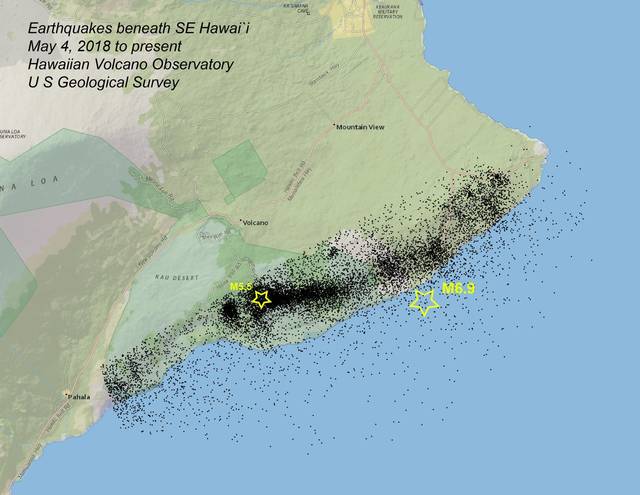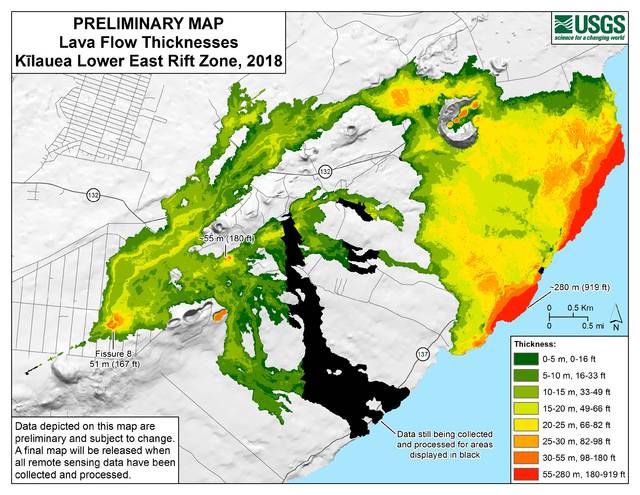HVO staff lend a helping hand to Alaska colleagues
ALEUTIAN ISLANDS, ALASKA Volcano observatories across the United States work together to ensure efficient and thorough monitoring of the nations active volcanoes. This collaboration is particularly evident during a crisis, like the 2018 eruption of Kilauea Volcano.
Volcano Watch: Volcano scientists gather for a volatile meeting
HILO This week, a group of volcanic gas scientists from across the United States, including staff from the USGS Hawaiian Volcano Observatory, will gather at the Cascades Volcano Observatory in Vancouver, Washington, for a workshop to improve and facilitate collaboration within the volcanic gas community during times of eruption or volcanic unrest.
Volcano Watch: Sub-Antarctic lava lake spied from space
HILO Last month, the entire world celebrated the 50th anniversary of Apollo 11s triumphant flight to the moon and the first human footsteps on the surface of another planetary body on July 20, 1969.
Volcano Watch: What does water in Halemaumau mean?
VOLCANOES NATIONAL PARK The slowly deepening pond of water on the floor of Halemaumau, the first in recorded history, has captured the interest of media and the public, both locally and nationally. Many questions are being asked. The two most frequent are, where is the water coming from, and what is its importance?
Scientists say water in Halemaumau crater is heated by volcano
HONOLULU Scientists have discovered that a growing pond of water inside Halemaumau crater is being heated by Kilauea volcano.
Mauna Loa Volcano’s 1935 lava flow seen in current media coverage of Mauna Kea
In ongoing media coverage of demonstrations at the base of Maunakea, many hundreds of people can be seen standing on a black lava flow that surrounds the Puu Huluhulu Native Tree Sanctuary adjacent to the Daniel K. Inouye Highway. That same lava flow continues on the other side of the highway, which traverses the saddle between Mauna Loa and Maunakea.
2019 marks the 50th anniversary of Kilauea’s Mauna Ulu eruption
HILO May 24, 2019, was a notable date in Kilauea Volcanos history. It is the one-year anniversary of several key events in the 2018 Kilauea eruption, most notably, the reactivation of fissure 8 with intermittent spattering while fissures 7 and 21 were producing two aa flows. It is also the 50th anniversary of another important event on Kilaueas East Rift Zone: the start of the 1969-1974 Mauna Ulu eruption.
Scientists consider raising Mauna Loa alert level
HILO The Hawaiian Volcano Observatory hasnt yet increased the alert level for Mauna Loa as it shows signs of increased activity.
Volcano Watch: Students used science to monitor eruption air
HAWAII VOLCANOES NATIONAL PARK During the 2018 eruption of Kilauea Volcano, when fissures erupted and lava flowed in the lower East Rift Zone (LERZ), many Puna residents were displaced from their homes. We, as a community, watched from the sidelines as the eruption went on, helpless in averting the course of nature.
Volcano Watch: New insights gained from Kilauea summit collapses
VOLCANOES NATIONAL PARK A year ago, USGS Hawaiian Volcano Observatory scientists and Hawaii Island residents were in the throes of an historically unprecedented series of events for Kilauea.
What we’ve learned from Kilauea’s 2018 lower East Rift Zone eruption
HAWAII VOLCANOES NATIONAL PARK May 3 marks the one-year anniversary of the start of Kilauea Volcanos 2018 lower East Rift Zone eruption. Over the past year, USGS Hawaiian Volcano Observatory (HVO) geologists and collaborators have been closely studying the vast amount of data collected during the summer eruption. Now is a good time to explore whats been learned, and whats still unfolding.
What caused — or did not cause — the 2018 Kilauea eruption?
HAWAII VOLCANOES NATIONAL PARK When a major geologic event occurs, scientists who study such events and the people who are directly or indirectly impacted by it seek to understand its cause. Often, a first step toward that understanding is to rule out what did not cause the event.
Recent ground control survey helps finalize USGS lava thickness map
HAWAII VOLCANOES NATIONAL PARK In February, the USGS Hawaiian Volcano Observatory (HVO) released a preliminary map of lava flow thicknesses for Kilauea Volcanos 2018 lower East Rift Zone eruption. This map was produced by comparing pre- and post-eruption models of the flow field.
Eruption pause provides an opportunity to probe volcanic pollution
HAWAII VOLCANOES NATIONAL PARK The end of Kilaueas 2018 eruption this past September was accompanied by an enormous decrease in the amount of sulfur dioxide gas (SO2) emitted from the volcano. This has led to beautifully clear skies gracing Hawaii Island, particularly noticeable on the west side, where the volcanic pollution known as vog chronically collected in past years.
HVO to Oahu?: Officials mull possible future sites for USGS facility
HILO The U.S. Geological Survey is continuing to search for a new home for the Hawaiian Volcano Observatory after it was displaced from the edge of the Kilauea caldera last year.
New outcrops make good geology
VOLCANOES NATIONAL PARK A good field geologist is an opportunist. Never content with what outcrops are available, she jumps at the chance to see another one, hoping that it will provide a better understanding to some question about what happened in the past. But it isnt every day that new outcrops are created, and rarer still when they are on the scale of those formed during the faulting of Kilauea Volcanos caldera floor in summer 2018.
HVO: Kilauea’s next eruption probably is years away and likely to be in the caldera
Volcano Watch: Did groundwater trigger explosive eruptions at Kilauea?
VOLCANOES NATIONAL PARK In February 1924, the surface of the lava lake at Halemaumau dropped rapidly and disappeared from view. Throughout March and April, the crater floor subsided as magma moved out of the summit reservoir into the East Rift Zone. By May 6, 1924, the floor of Halemaumau had dropped more about 600 feet below the crater rim.
M5.5 earthquake: A bump in the night toward more typical seismic background
VOLCANOES NATIONAL PARK Early Wednesday morning, just before 1 a.m., houses in East Hawaii began to shake. Without a doubt, it was an earthquake. To those who endured the near-daily shaking from last summers collapse events at Kilaueas summit, this weeks earthquake was clearly different.
Volcano Watch: Why does lava thickness matter?
VOLCANOES NATIONAL PARK Eruption rate how much lava comes out of the ground per unit of time is probably the best measure of volcanic activity, and the first step in that calculation is to measure lava flow thickness and area.

